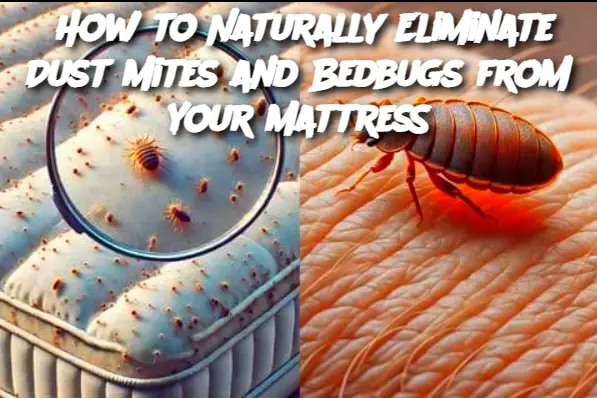ADVERTISEMENT
Lemon-Scented Spray: If you prefer a fresh citrus scent, add lemon essential oil to the water mixture instead of lavender or eucalyptus oil. Lemon oil also has insect-repelling properties.
Diatomaceous Earth: Another natural remedy is diatomaceous earth, which can be lightly dusted over the mattress. It kills pests by dehydrating them, but be careful not to inhale the powder.
Freezing (for Bedbugs): If you suspect a more significant bedbug infestation, consider placing your pillows, cushions, or smaller bedding items in a plastic bag and freezing them overnight. Extreme cold can kill bedbugs.
Frequently Asked Questions:
Q: How often should I clean my mattress to prevent dust mites and bedbugs? A: It's recommended to clean your mattress every 1-2 months, depending on your environment and the level of pest activity. If you live in a humid climate or have allergies, more frequent cleaning may be necessary.
Q: Can I use these methods on other furniture? A: Yes, you can apply these natural cleaning techniques to other fabric-covered furniture, such as couches and chairs. Just be sure to test any solutions on a small area first to ensure they don’t cause damage.
Q: Are these methods effective for eliminating bedbugs? A: While natural methods can reduce the number of bedbugs and dust mites, severe infestations may require professional treatment. If you suspect a major infestation, it’s best to consult a pest control expert.
Q: Can essential oils harm my mattress or fabrics? A: Most essential oils are safe to use on mattresses when diluted properly with water. However, always perform a patch test on a small, inconspicuous area of the fabric before applying it liberally to the mattress.
By using these natural methods, you can keep your mattress clean, fresh, and free from dust mites and bedbugs without resorting to harsh chemicals. Regular maintenance will ensure a healthier and more comfortable sleeping environment for years to come.
ADVERTISEMENT
